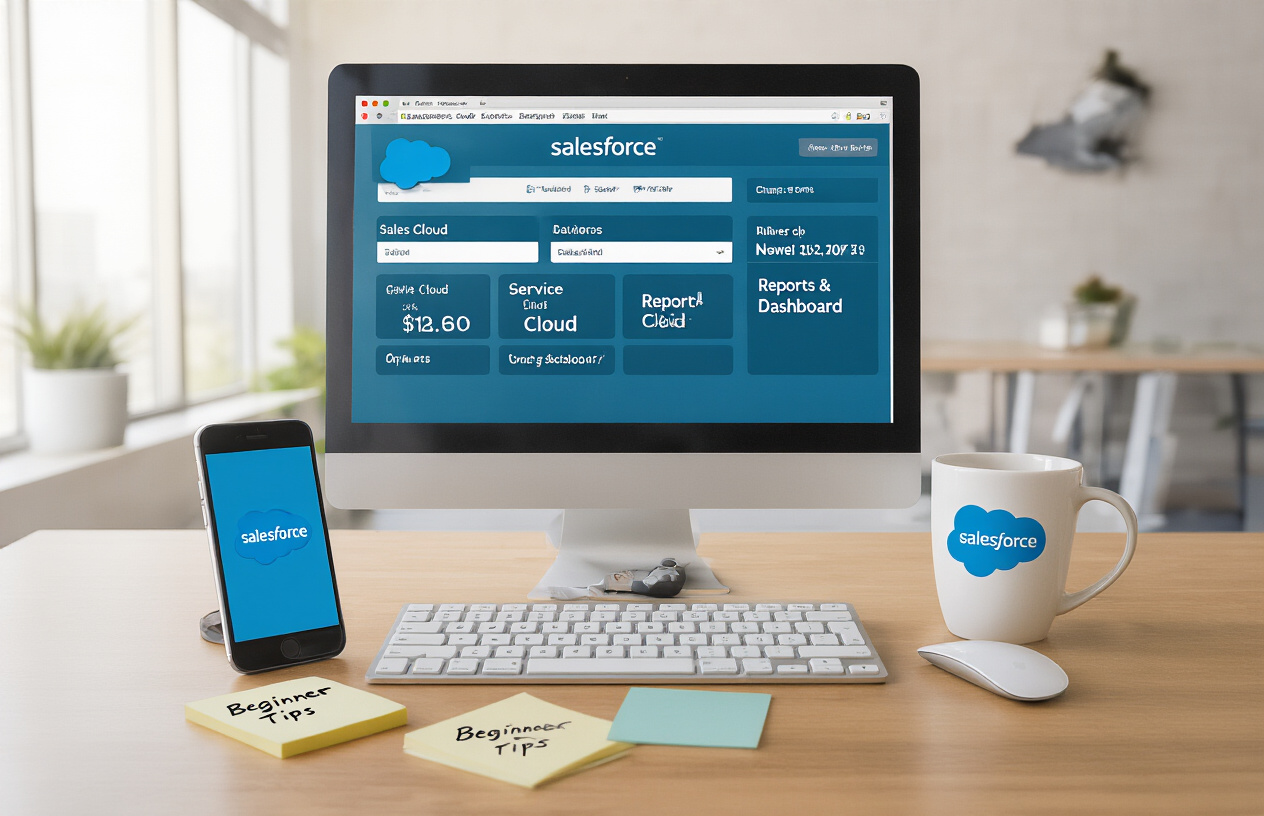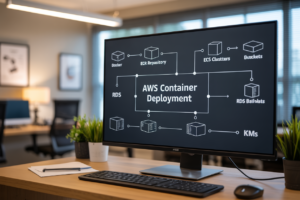You just spent six figures on Salesforce and half your team is still tracking leads in spreadsheets. Ouch.
Let’s be real: impressive tech means nothing if your people won’t use it. User adoption isn’t just some IT checkbox—it’s the difference between Salesforce becoming your competitive advantage or an expensive digital paperweight.
I’ve spent 15 years implementing Salesforce across industries, and the pattern is clear: companies that nail user adoption strategies see 3x higher ROI than those who don’t.
What separates success from failure isn’t the fancy features you’ve paid for. It’s something much simpler but harder to execute.
Want to know the exact framework that transformed a 12% adoption rate into 89% in just three months at a Fortune 500 company?
Understanding User Adoption Challenges
Common barriers to Salesforce acceptance
Ever noticed how people resist Salesforce like it’s a trip to the dentist? From the “we’ve always done it this way” crowd to those overwhelmed by too many fields, resistance is real. Some just hate learning new tech, while others worry Salesforce means their boss is watching their every move.
The cost of poor user adoption
When teams dodge Salesforce, your investment circles the drain. Bad data leads to terrible decisions, sales opportunities vanish into thin air, and your expensive system becomes nothing but a fancy paperweight. The real kicker? Your competitors who got adoption right are pulling ahead while you’re still fighting spreadsheet addiction.
Identifying adoption pain points in your organization
Spot the warning signs: empty dashboards, outdated records, and that one rep who still keeps contacts in a notebook. Talk to your team honestly—what’s making them avoid Salesforce? Watch them use it. You’ll quickly see whether it’s a training issue, clunky processes, or just good old resistance to change holding everyone back.
Building a Robust Change Management Strategy
Building a Robust Change Management Strategy
A. Securing executive sponsorship
Ever notice how Salesforce projects fizzle without top-level buy-in? C-suite champions don’t just unlock budgets—they demolish roadblocks. They’re your megaphone when Sally from accounting starts complaining. Find an executive who’ll actually use the system and showcase wins. That’s your golden ticket.
Effective User Training Approaches
Role-based training programs
Training that fits specific job roles hits differently. Sales reps need different Salesforce skills than support teams. When you tailor training to what people actually do daily, adoption jumps dramatically. No more glazed-over eyes during irrelevant sessions!
Microlearning vs. comprehensive sessions
Bite-sized training often beats marathon sessions. Five-minute videos on specific features can work wonders compared to day-long workshops where information overload is real. But sometimes deeper dives are necessary for complex processes. Mix it up based on what you’re teaching.
Creating a continuous learning culture
Salesforce evolves constantly, and your training should too. Build a knowledge base, schedule monthly tips sessions, and celebrate when team members master new features. The organizations crushing it with Salesforce make learning part of their DNA, not a one-time event.
Customizing Salesforce for Maximum Usability
Customizing Salesforce for Maximum Usability
A. Simplifying page layouts and processes
Most Salesforce orgs are cluttered messes that overwhelm users. Strip away the noise! Keep only essential fields, organize them logically, and create step-by-step processes that make sense. Your users don’t need to see 50 fields when they’re just trying to update a phone number.
B. Creating intuitive user interfaces
Lightning pages should feel obvious, not confusing. Design with your users’ daily workflow in mind. Place commonly used actions front and center, group related elements together, and use consistent visual cues. Remember: if they have to think about how to use it, you’ve already failed.
C. Implementing time-saving automation
Nobody wants to do repetitive tasks. Set up automation that handles the boring stuff – auto-populated fields, workflow rules that trigger updates, and process builders that create related records. Your goal? Make users think Salesforce is reading their minds.
D. Personalizing views for different departments
Marketing doesn’t need what Sales needs. Create role-specific layouts and list views that show exactly what each department cares about. Sales wants pipeline visibility, Support needs case details, and Executives want dashboards. Give everyone their perfect view.
E. Removing unnecessary fields and features
Be ruthless about digital clutter. Audit your system regularly and cut anything that’s not actively helping users. Those “just in case” fields you added three years ago? Gone. The custom objects nobody uses? Archived. A clean Salesforce is a used Salesforce.
Driving Engagement Through Gamification
Creating healthy competition with leaderboards
Want to see your Salesforce adoption skyrocket? Leaderboards work like magic. Put them on dashboards where everyone can see who’s logging the most activities or closing deals. Nothing motivates your team faster than seeing their name climb that board. Plus, it’s just plain fun to turn mundane data entry into a contest worth winning.
Recognizing achievements with badges and rewards
Digital badges might seem silly until you see people chasing them. Create achievements for Salesforce milestones—completing profiles, logging calls, or updating opportunities. Pair virtual recognition with tangible rewards like coffee gift cards or primo parking spots. You’d be amazed how hard people will work for a $5 latte and bragging rights.
Using progress tracking to motivate users
Progress bars tap into our human need for completion. Show users how close they are to mastering Salesforce with visual trackers. Nobody likes seeing a half-filled circle. Set incremental goals that feel achievable—”you’re 80% to sales superstar status”—and watch your team scramble to fill that final 20%.
Leveraging Super Users and Champions
Identifying potential Salesforce advocates
Look for those team members who just get excited about Salesforce. They’re the ones asking smart questions, figuring out shortcuts, and helping colleagues without being asked. These natural problem-solvers make perfect champions – they already see the value and can translate tech-speak into practical benefits that make sense to everyone else.
Training and empowering your champion network
Give your champions the VIP treatment. Advanced training, direct access to admins, and recognition for their contributions makes them feel valued. When champions feel ownership, they’ll defend your Salesforce investment like it’s their own baby. Plus, they’ll spread that enthusiasm throughout their departments.
Creating feedback channels through super users
Your super users are walking, talking feedback machines. They hear the complaints, frustrations, and wish-list items before you do. Set up regular check-ins where they can bring these insights to the table. This real-time intel helps you squash issues before they become adoption roadblocks.
Technical Strategies to Boost Adoption
A. Mobile optimization for on-the-go access
Ever notice how your sales team is rarely at their desks? That’s why Salesforce’s mobile app isn’t just nice-to-have—it’s essential. Optimize your Salesforce instance for mobile by simplifying page layouts, creating mobile-specific action buttons, and enabling offline access. Your field reps will thank you when they can update opportunities from client parking lots instead of playing catch-up later.
B. Integration with existing tools and workflows
Nobody likes toggling between fifteen different apps just to complete one task. Connect Salesforce with the tools your team already loves—whether that’s Outlook, Slack, or industry-specific software. The magic happens when Salesforce feels like an extension of their existing workflow rather than an annoying detour. Smart integrations reduce duplicate data entry and make adoption practically automatic.
C. Performance optimization for faster response
Slow systems get abandoned faster than you can say “spinning wheel of death.” Audit your Salesforce implementation regularly to identify performance bottlenecks. Clean up unnecessary validation rules, streamline complex workflows, and optimize resource-heavy reports. A lightning-fast Salesforce experience removes the biggest excuse for non-adoption: “It takes too long.”
D. Implementing single sign-on for seamless access
Password fatigue is real. When users need to remember yet another complex password, they’ll find workarounds—usually insecure ones. Implementing SSO lets your team access Salesforce with their existing company credentials. It’s a small technical change that dramatically improves the daily experience and removes a key friction point in user adoption.
Measuring and Improving Adoption Success
A. Key adoption metrics to track
You can’t improve what you don’t measure. Track login rates, feature usage, data quality, and user activity levels. These metrics reveal the real story of how your team is actually using Salesforce—not how you hope they’re using it. When numbers drop, you’ll spot problems before they become disasters.
Implementing Salesforce successfully hinges on comprehensive user adoption. By addressing adoption challenges head-on through strategic change management, effective training programs, and thoughtful customization, organizations can significantly increase platform engagement. The integration of gamification elements, cultivation of super users, and implementation of technical optimizations further cement adoption across teams.
Take the time to regularly measure adoption metrics and gather user feedback to continuously refine your approach. Remember that successful Salesforce adoption is not a one-time event but an ongoing journey that requires attention and adaptation. Start implementing these strategies today to transform your Salesforce investment into a powerful asset that your entire organization embraces and leverages to its full potential.




















